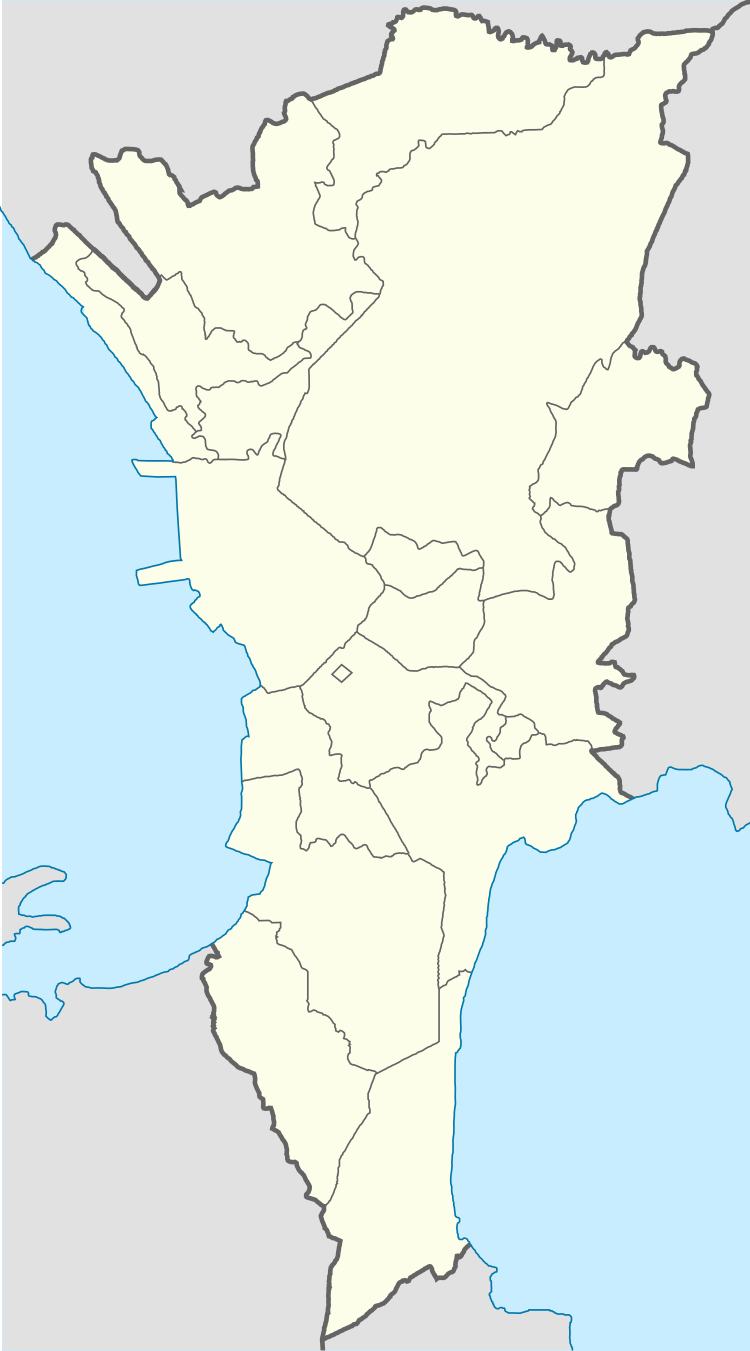Pinaglabanan Shrine
| Pinaglabanan Shrine | |
|---|---|
 Pinaglabanan Shrine | |
 Pinaglabanan Shrine | |
| Type | Shrine |
| Location | San Juan, Manila, Philippines |
| Coordinates | 14°36′17″N 121°01′52″E / 14.604743°N 121.031152°ECoordinates: 14°36′17″N 121°01′52″E / 14.604743°N 121.031152°E |
| Area | 5 hectare |
| Created | 1880 |
| Open |
Tuesday to Sunday 8:00am - 5:00pm |
Pinaglabanan Shrine is a Filipino national shrine and park along Pinaglabanan Street in the city of San Juan, Metro Manila, Philippines. Prominent within the shrine is a statue of elongated figures known as "Spirit of Pinaglabanan" created by Eduardo Castrillo. This was built to commemorate the heroism of the Katipuneros who started the nationwide revolution in San Juan del Monte. The local freedom fighters known as katipuneros lay siege to an arms storage facility, called the 'Polvorin de Almacen', belonging to the Spanish Colonial Government.
Museo ng Katipunan
On 27 August 2013, at 10:00 a.m., the National Historical Commission of the Philippines (NHCP) inaugurated its Museo ng Katipunan in Pinaglabanan Shrine, celebrating the 150th birth anniversary of the Filipino nationalist Andres Bonifacio.
This museum is entirely devoted to Bonifacio and the Katipunan, with interactive displays and original Katipunan artifacts. The museum will present an initial list of members of the Katipunan and others who supported its cause, numbering more than 2,500. The names were obtained from archival sources.
The museum has an e-learning room where students from grades 5-7 will take online interactive lessons about Bonifacio and the Katipunan—the first in the country—produced by the NHCP. The activity is undertaken in partnership with the Department of Education.
The opening of the museum was the occasion for launching the book El Comercio, an afternoon daily (in Spanish) that narrated events of the revolution from its outbreak in August 1896 to the exile of Aguinaldo to Hong Kong in December 1897. The accounts were selected and translated into English by the late Umberto Lammoglia.[1]
Gallery
References
| Wikimedia Commons has media related to Pinaglabanan Shrine. |
